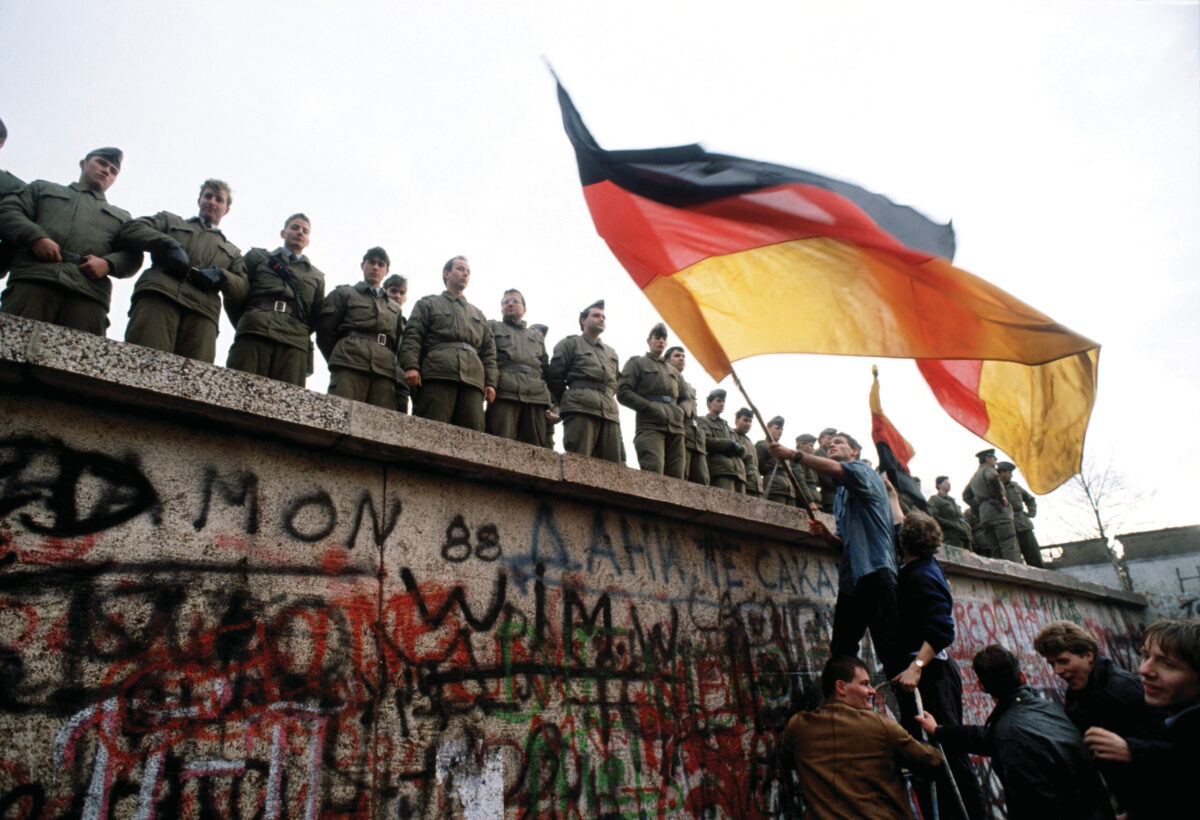Borders have always been more than mere lines on a map; they are the demarcations that shape nations, influence cultures, and dictate geopolitics. Over the centuries, the drawing and redrawing of borders have had profound impacts on global affairs, often altering the course of history. Here, we explore some of the most significant borders that have changed the world, highlighting their historical context and ongoing implications.
The Berlin Wall: A Symbol of Division and Reunification

The Berlin Wall, erected in 1961, stood as the most palpable symbol of the Cold War, dividing East and West Berlin. This concrete barrier not only physically separated families and friends but also represented the ideological divide between the capitalist West and the communist East. For nearly three decades, it stood as a testament to the tensions between the United States and the Soviet Union. Its fall in 1989 was a momentous event, marking the beginning of the end for the Cold War and leading to the reunification of Germany.
The Berlin Wall’s legacy continues to influence contemporary discussions about freedom, democracy, and human rights. The peaceful revolution that led to its fall serves as a reminder of the power of collective action and the enduring human desire for liberty. Germany’s reunification process, although challenging, has become a model for integrating divided nations and healing historical wounds.
The 38th Parallel: The Korean Demilitarized Zone (DMZ)
The 38th Parallel, established at the end of World War II, split the Korean Peninsula into North and South Korea. This border has been one of the most heavily fortified and tense boundaries in the world since the Korean War armistice in 1953. The Demilitarized Zone (DMZ) that runs along this parallel is both a buffer and a stark reminder of the ongoing conflict and division between the communist North and the democratic South.
Efforts at reconciliation and peace talks have been intermittent, but the border remains a critical flashpoint in East Asian geopolitics. The DMZ is also a unique ecological preserve, where nature has thrived amidst human absence, symbolizing hope for future peace and reunification. The Korean Peninsula’s division continues to impact regional stability, with global implications for security and diplomacy.
The Durand Line: The Unsettled Border Between Afghanistan and Pakistan
The Durand Line, drawn in 1893 by the British colonial administration, divides Afghanistan and Pakistan. This border has been a source of tension and conflict for over a century. It cuts through the Pashtun tribal areas, ignoring ethnic and cultural divisions, and has been a major factor in the instability of the region. The line is not officially recognized by Afghanistan, leading to disputes and complicating efforts to manage cross-border insurgency and terrorism.
The Durand Line exemplifies how colonial-era borders can create enduring challenges for modern states. It has hindered effective governance and development in both countries, contributing to ongoing conflict and humanitarian crises. Addressing the complexities of this border is essential for achieving long-term stability and peace in South Asia.
The Israel-Palestine Border: A Quest for Peace
The borders of Israel and Palestine remain some of the most contentious and disputed in the world. The establishment of Israel in 1948 and the subsequent Arab-Israeli conflicts have led to a complex and often violent struggle over territory. The boundaries between Israel and the Palestinian territories of the West Bank and Gaza Strip are not formally agreed upon, resulting in ongoing disputes and efforts to negotiate a two-state solution.
This border is central to Middle Eastern geopolitics and affects global diplomatic relations, reflecting the broader challenges of achieving peace and coexistence in a region fraught with historical grievances and political complexities. Efforts to resolve the Israeli-Palestinian conflict continue to be a focus of international diplomacy, with significant implications for regional stability and global security.
The India-Pakistan Border: A Legacy of Partition
The border between India and Pakistan, created during the Partition of British India in 1947, led to one of the largest and most traumatic migrations in history. The hurried and poorly planned division resulted in significant violence and a deep-seated rivalry between the two nations. The disputed territory of Kashmir remains a flashpoint, causing several wars and continuous military standoffs.
The India-Pakistan border is emblematic of the enduring impact of colonial decisions on modern international relations and the ongoing struggle for regional stability in South Asia. Despite numerous attempts at peace talks, the conflict over Kashmir persists, affecting millions of lives and posing a constant threat to regional security.
The US-Mexico Border: A Line of Opportunity and Controversy
The US-Mexico border, stretching nearly 2,000 miles, is one of the most frequently crossed international boundaries. It is a line of opportunity for many seeking better economic prospects, but it is also a source of significant political and social controversy. Issues such as immigration, drug trafficking, and border security dominate the political discourse in both countries.
The construction of physical barriers and the implementation of stringent immigration policies reflect broader debates about national sovereignty, human rights, and economic integration. The border is a microcosm of the challenges facing globalization and the movement of people, highlighting the need for balanced policies that address security concerns while respecting human dignity and fostering economic growth.
The South China Sea: Maritime Boundaries and Territorial Disputes
While not a land border, the South China Sea’s maritime boundaries are among the most contentious in the world. Several countries, including China, Vietnam, the Philippines, Malaysia, and Brunei, have overlapping territorial claims in this strategically vital and resource-rich area. The disputes have led to significant regional tension and militarization, impacting international trade routes and diplomatic relations.
The South China Sea highlights the complexities of maritime borders and the importance of international law in resolving such disputes. The region’s stability is crucial for global commerce, and efforts to manage these territorial claims peacefully are essential for maintaining international order and economic stability.